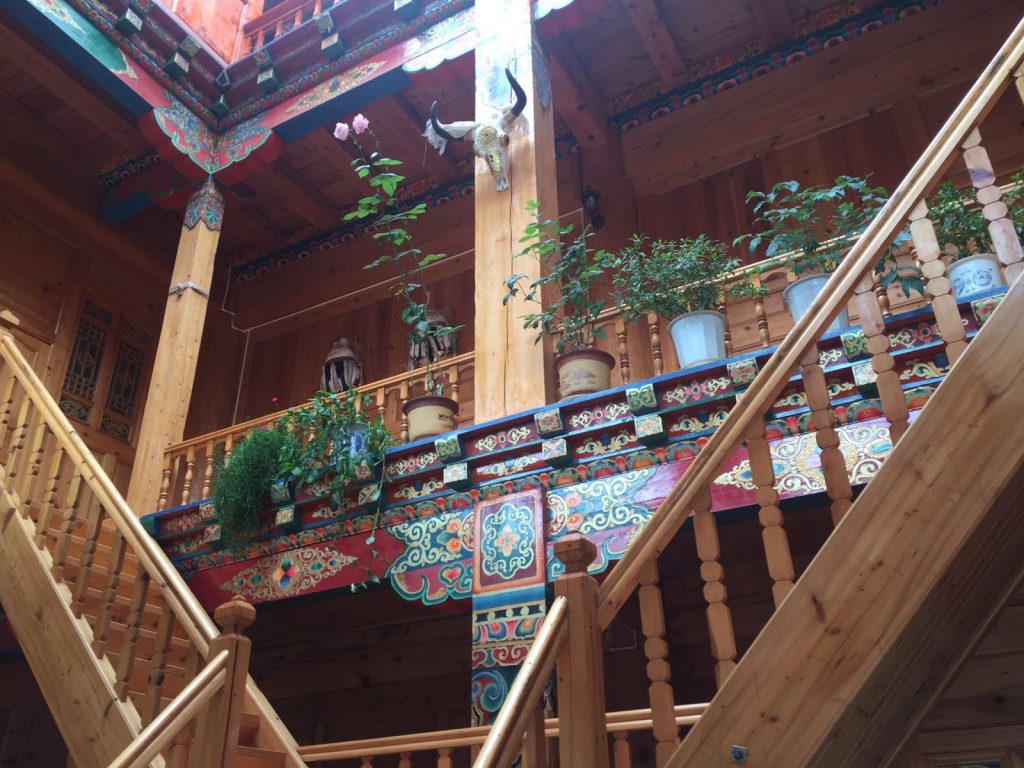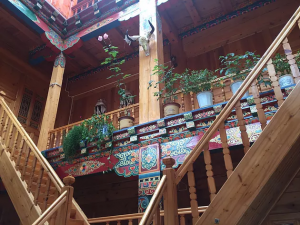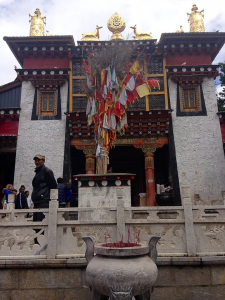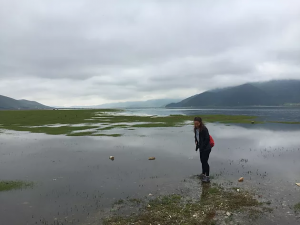
We have been here in Zhongdian for only a couple days now, and so far, we have seen and experienced many parts of the community through visiting a local Tibetan home, a Tibetan Buddhist monastery, and the Napahai wetlands.
Currently, we are staying at the China Exploration Research Society (CERS) center near the wetlands. In our short time here so far, we have been immersing ourselves in the local culture and learning about the community.

On the second day here, we visited the local home of Little Droma, one of the cooks at the center. The house was made almost completely out of wood with beautiful intricate carving and paintings on all of the walls. It was surprising to see the differences in their home compared to those back in the US. Each room was carefully decorated and had symbols that represented certain aspects of their life. For example, there were two small statues of the vegetable Bok Choy which represented that the family was healthy and could provide plentiful resources for themselves.
Visiting the local monastery, we followed Tibetan Buddhist customs as we admired the culture and scenery. When walking around the temple to view the site of the monastery, it was important that we traveled around it clockwise. Clockwise signifies luck while counterclockwise represents misfortune and bad spirits. So, when we were in search of the restroom and had passed it, we had to complete the circle around the temple in order to continue going clockwise, instead of turning around to walk several yards back to the restroom. Also, the number of circles one traveled around the temple was vital. Odd numbers represent fortune and luck while even numbers would bring about bad luck. Following these traditions provided a broader perspective of the beliefs of the people and how these traditions shape their daily lives.

Continuing to explore more of the local community and wildlife, Dr. Bill, a biologist working with CERS, led us on a very insightful adventure to the wetlands. The wetlands provide the community with a free source of grazing for livestock, including sheep, horses, and pigs. However, with the influx of visitors to the area, more and more of the wetlands have been set aside for tourism, taking away from the use of these natural resources. Though recent tourism has promoted economic growth, it has also increased the level of pollution in the area. Through clean ups and connecting with the community to build environmental awareness, CERS is working to counter the negative effects of outsider interactions. By encouraging the preservation of the local environment, we can help eliminate posing threats of non-degradable waste such as Styrofoam, plastic bottles and wrappers, and aluminum cans.

